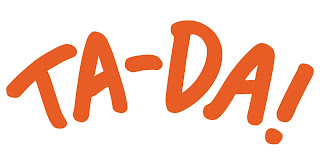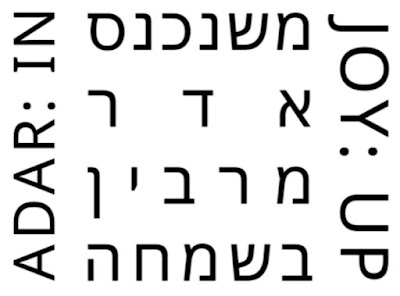Let Our Joy Increase 2X: Thank God it's Adar (and has been since last Shabbat)! When Adar arrives, our happiness goes way up. Which is good - because God knows we can use all the happiness we can get.
This year, especially. And, as it turns out - as it often does - this year we get twice the happiness we usually get.
That's because this year (תשׁפ״ד = 5784) is a Leap Year. According, of course, to the Hebrew Calendar.
Hebrew Calendar before proceeding. See
- Nineteen and Twenty-Eight (April 11, 2013)
- Easter On Purim (March 16, 2016)
- Apple Sauce and Sour Cream (December 14, 2020)
- Let's Twist Again! (June 22, 2023)
So. Your first question may (or, then again, may not) be:
How do we know it's a Leap Year?
Wikipedia explains how the Masters of the Hebrew Calendar have done it, like forever (but not really):
To determine whether year n of the calendar is a leap year, find the remainder on dividing [(7 × n) + 1] by 19. If the remainder is 6 or less it is a leap year; if it is 7 or more it is not.
For example, the remainder on dividing [(7 × 5774) + 1] by 19 is 6, so the year 5774 is a leap year. The remainder on dividing [(7 × 5775) + 1] by 19 is 13, so the year 5775 is not a leap year.
And for this year:
The remainder on dividing [(7 × 5784) + 1] by 19 is 0, so the year 5784 is a leap year. The remainder in dividing [(7 × 5785) + 1] by 19 is 7, so the year 5785 is not a leap year.
What happens on a Leap Year?
We know, from our years of experience, that something ... something ... must be added. But what? Pope Gregory XIII - after a minor adjustment (Thursday October 4, 1582 was followed by Friday October 15, 1582) - said
Every year that is exactly divisible by four is a leap year, except for years that are exactly divisible by 100, but these centurial years are leap years if they are exactly divisible by 400.
For example, the years 1700, 1800, and 1900 are not leap years, but the year 2000 is.
That's how we end up this year (2024) with a February 29th. Which was immediately OK for the Catholics, then (very gradually) for the Protestants - and eventually for most of the so-called "civil"-ized world.
But we Jews are always up for a challenge. So (says Wikipedia):
Adar (Hebrew: אֲדָר) is the sixth month of the civil year and the twelfth month of the religious year on the Hebrew calendar. It is a month of 29 days.
The month's name, like all the others from the Hebrew calendar, was adopted during the Babylonian captivity.
In leap years, it is preceded by a 30-day intercalary month ....
That's right! We've got Adar Alef Adar Rishon Adar I and we've got Adar Bet Adar Sheni Adar II. A whole extra month every leap year!
And - once again, because we're Jews - the extra month is generally accepted as Alef Adar Rishon Adar I, not Adar Bet Adar Sheni Adar II. Which is to say: Adar I cuts in line. Wikipedia explains:
Based on a line in the Mishnah declaring that Purim must be celebrated in Adar II in a leap year (Megillah 1:4), Adar I is considered the "extra" month.
As a result, someone born in Adar during a non leap year would celebrate their birthday in Adar II during a leap year.
However, someone born during either Adar in a leap year will celebrate their birthday during Adar in a non-leap year, except that someone born on 30 Adar I will celebrate their birthday on 1 Nisan in a non-leap year because Adar in a non-leap year has only 29 days.











No comments:
Post a Comment